
I never dreamed that it was literature that drew me to London. Increasingly, I’ve found myself visiting locations that are signposted in novels, to work out where the action takes place. Apple Tree Yard by Louise Doughty is a well-known example, and following its television series as well, I decided to stand on the site and get the measure of how it appears in reality compared to how the writer creates it in my imagination. The difference in scale can result in a multitude of responses culminating in congratulating a brilliant writer for evoking a whole new world peopled with imaginary lives and or a consummate loss of innocence from where it started.
I was mulling on how words can transport readers across spaces as I was standing beneath the alley’s signpost of Apple Tree Yard within the proximity of The London Library, and Beau Brummel’s London, all layered in a location inspired by English politician and courtier Henry Jermyn, 1st Earl of Saint Albans (1605-1684) and the court favourite of Queen Henrietta Maria, consort of Charles I of England. I was trapezing across time.
By happenstance I looked across and had another ripple of history. Just opposite was a new building, on the site of an older one that commemorated where Sir Edwin Lutyens unfurled his plans of building New Delhi for the British Raj between 1912-1930. A little over a hundred years on I was standing on a razed site dedicated to the place which laid plans for the city of my birth – New Delhi; a confluence of traditional Mughal and colonial-style architectures that have influenced the languages I think, dream, speak and write in.
Denne historien er fra August 2021-utgaven av The Vedanta Kesari.
Start din 7-dagers gratis prøveperiode på Magzter GOLD for å få tilgang til tusenvis av utvalgte premiumhistorier og 9000+ magasiner og aviser.
Allerede abonnent ? Logg på
Denne historien er fra August 2021-utgaven av The Vedanta Kesari.
Start din 7-dagers gratis prøveperiode på Magzter GOLD for å få tilgang til tusenvis av utvalgte premiumhistorier og 9000+ magasiner og aviser.
Allerede abonnent? Logg på

Panchakroshi Parikrama of Varanasi
At the snow-capped Kailas, the Divine Lord Shiva was seated with Mother Parvati.
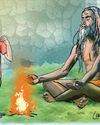
Gadai and the Monks
A fictional narrative based on incidents from the childhood of Sri Ramakrishna.
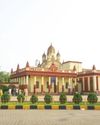
Chintayo momo maanosho Hori...
Sri Ramakrishna loved songs. There probably was no normal day when he did not sing some songs.
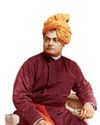
The Vedanta Vaccine
The world is still struggling under the impact of the pandemic due to Covid-19 for the last three years.

Chandrakirti's Chariot: Self in Madhyamaka Buddhism and Advaita Vedanta
The goal in Advaita Vedanta is the cessation of suffering and the attainment of true fulfillment. Suffering, according to this school, is due to ignorance of the true nature of the self and consequent erroneous identification with the body-mind.
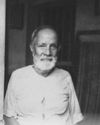
Reminiscences of Sargachhi
Question: यद्यदाचरतत श्रेष्ठसतत्तदरेवरेतरो जनिः। ‘Whatever a superior person does, others do the same thing!’ (Gita 3:21) – What does this statement mean?
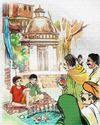
THE AUTUMN FESTIVAL
A fictional narrative based on incidents from the childhood of Sri Ramakrishna.

Bards of Guruvayur: Vilwamangalam II
Saints of India
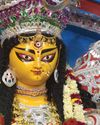
In the Universal Mother’s Divine Playground
Swami Vivekananda never taught the worship of Mother Kali. In a letter to Mary Hale he writes, “Kali worship is not a necessary step in any religion.
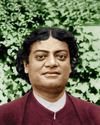
Swami Vivekananda: A Sportsman Par Excellence
In various books and articles, Swami Vivekananda has been called a spiritual leader, a prophet, a patriot, a social reformer, a philosopher, a yogi, a writer, an orator, an educationist, a musician, and so on.